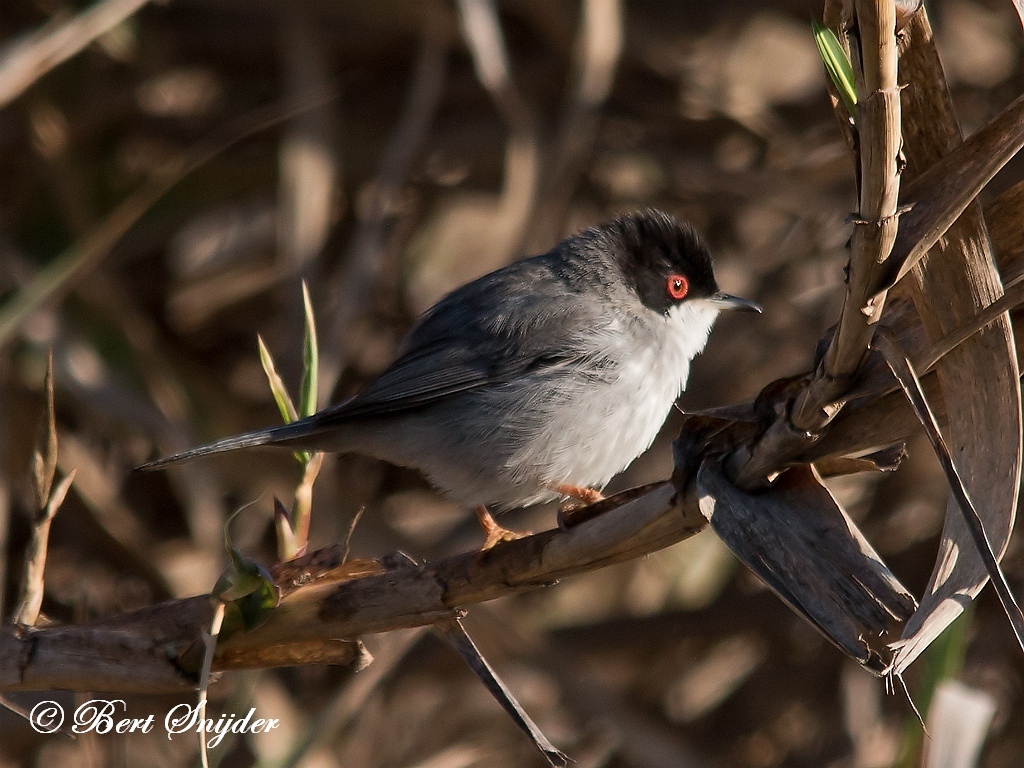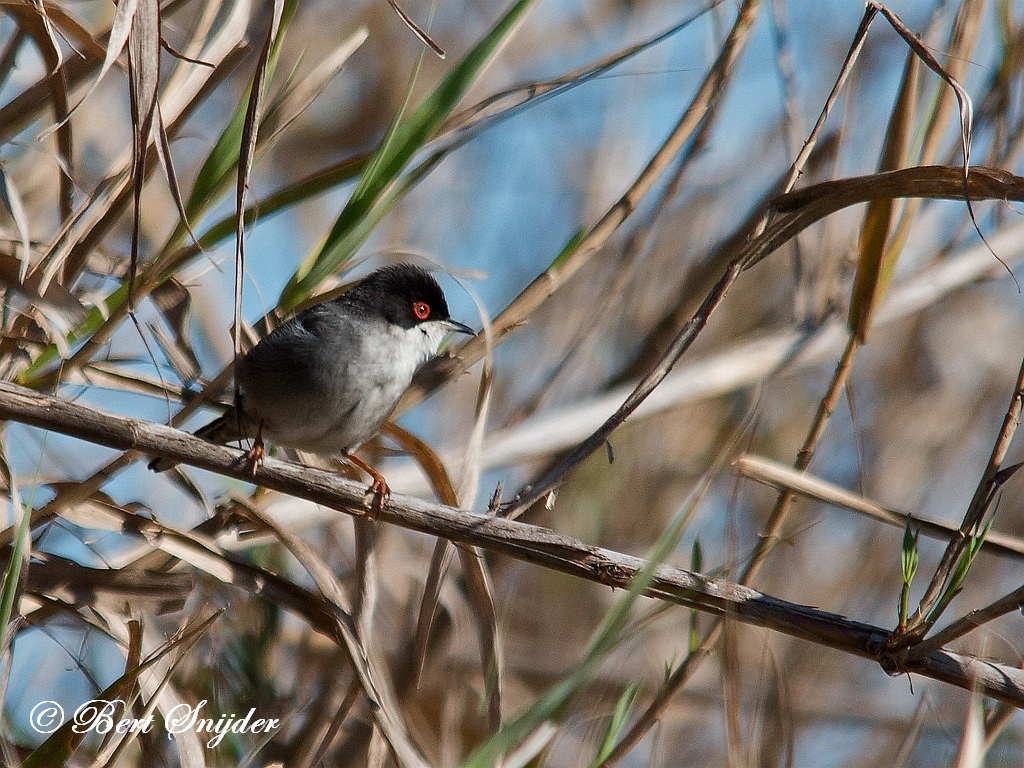Sardinian Warbler, Kleine Zwartkop, Samtkopfgrasmucke, Toutinegra de cabeça preta, Curruca cabecinegra
Spotted on our property Monte Horizonte in the Alentejo Region of Portugal. Sardinian Warbler sound
The Sardinian Warbler, Sylvia melanocephala, is a common and widespread typical warbler from the Mediterranean region.

More photos at the bottom of this page.
Like most Sylvia species, it has distinct male and female plumages. The adult male has a grey back, whitish underparts, black head, white throat and red eyes. Plumages are somewhat variable even in the same locality, with the intensity of a reddish hue on upper- and/or underside varies from absent to (in some subspecies) pronounced. The female is mainly brown above and buff below, with a grey head.
The Sardinian Warbler’s song is fast and rattling, and is very characteristic of the Mediterranean areas where this bird breeds.
It breeds in the southernmost areas of Europe and just into Asia in Turkey and the eastern end of the Mediterranean. This small passerine bird, unlike most “warblers”, is not particularly migratory, but some birds winter in north Africa, and it occurs as a vagrant well away from the breeding range, as far as Great Britain.
This is a bird of open country and cultivation, with bushes for nesting. The nest is built in low shrub or brambles, and 3-6 eggs are laid. Like most “warblers”, it is insectivorous, but will also take berries and other soft fruit.
Together with Menetries’ Warbler it forms a superspecies. Both thave white malar areas and light throats, and otherwise black theads in adult males, as well as a naked ring around the eye. The Subalpine Warbler, which seems the superspecies’ closest relative, has a dark throat and breast and a dark gray upper head in males, but otherwise shares these characters. These three species are related to a dark-throated superspecies consisting of Rüppell’s Warbler and the Cyprus Warbler, which also share the white malar area with blackish above.
This bird may be considered a superspecies, divided into the western Sylvia melanocephala and Sylvia momus from the more arid regions of the Near East and adjacent Africa.












Other synonyms:
Catalan: Busqueret capnegre, Tallarol capnegre
Catalan (Balears): Busqueret capnegre
Czech: Penice belohrdlá, pìnice bìlohrdlá
Welsh: Telor Sardinia
Danish: melanocephala Sorthovedet Sanger, Sorthovedet sanger
German: Samtkopfgrasmücke, Samtkopf-Grasmücke, Samtkopf-Grasmücken
English: Black-capped Warbler, Sardinian Warbler
Spanish: Currruca Cabecinegra, Curruca Cabecinegra, Curruca carrasqueña, Curruca de Cabeza Negra
Estonian: sametpea-põõsalind
Basque: Tallarol capnegre , Txinbo burubeltza
Finnish: Samettipääkerttu
Faroese: Høvuðsvartur ljómari
French: Fauvette mélanocéphale
Irish: Ceolaire Sairdíneach
Galician: Papuxa cabecinegra, Tallarol capnegre
Croatian: Crnoglava Grmuša
Hungarian: Kucsmás poszáta
Icelandic: Hjálmsöngvari
Italian: Occhiocotto
Japanese: kurogashirahakkouchou, kurogashiramushikui
Latin: Sylvia melanocephala
Maltese: Bufula Sewda
Dutch: Kleine Zwartkop
Norwegian: Svarthodesanger
Polish: pokrzewka aksamitna, Pokrzewka czarnoglowa
Portuguese: Felosa dos valados, toutinegra de cabeça preta, Toutinegra-de-cabeça-preta
Romansh: Fustgetta dal chau nair
Slovenian: žametna penica
Albanian: Bilbilthi kokëzi gushëbardhë
Serbian: crnorepa grmuša
Swedish: Sammetshätta
Travel Birdwatching Holiday Alentejo, Vacation Portugal for birders guided birdwatching Tours and Trips.